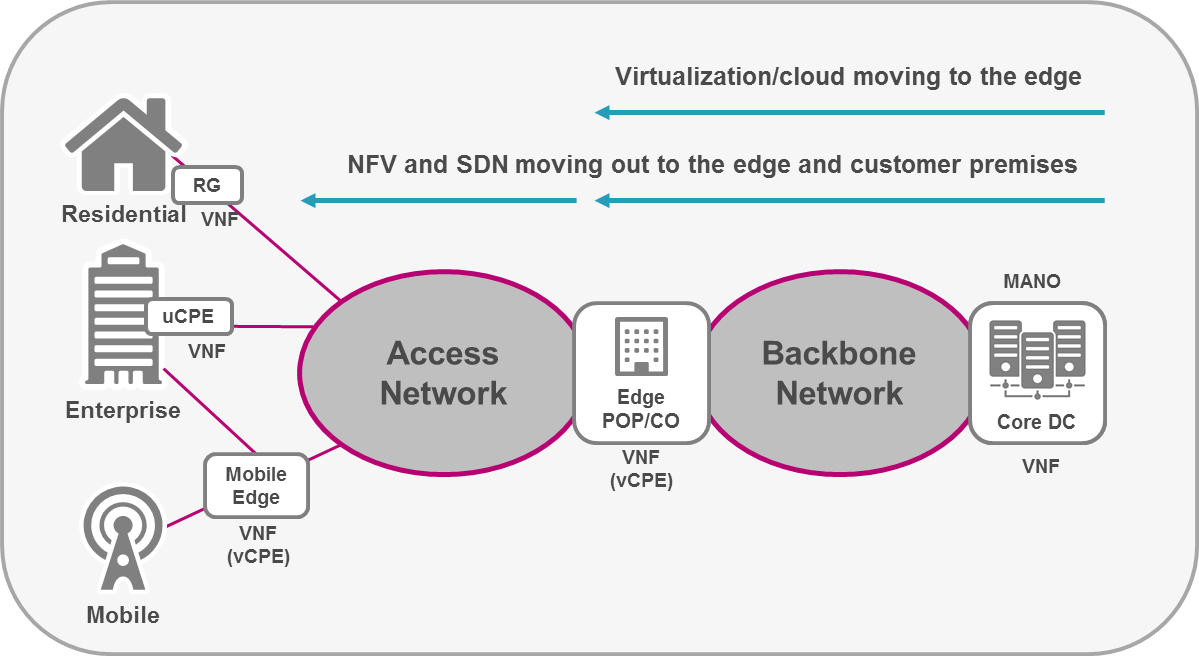How a company can implement Network Function Virtualization (NFV) into their network?
What's the progression of how a service provider would implement a network service?
Let's begin with hardware appliances: while plenty of existing appliance-based solutions are still operational, the market is moving towards virtualization. The model with a single software instance that ran on proprietary hardware is transitioning to a single virtual software instance on a commercial off-the-shelf platform. In fact, companies have been deploying virtual applications running on software in data centers for some time now.
But for a company to truly begin to take advantage of operational efficiencies and capital expense savings, Network Function Virtualization (NFV) is the logical next step. Session Border Controllers (SBCs,) for example, are already being virtualized and some of those virtual SBCs are now being implemented as a Virtual Network Functions (VNF) which allows orchestration of virtual software instances on an open platform.
But the progression need not end there. The next step is to move into a cloud-native virtual environment which takes advantage of a microservices architecture where VNFs are broken down into its component pieces. Each of these individual components can be orchestrated based on the flexibility, efficiency, and performance that are specific to each function.
The progression path of a given service provider depends on where you are as a company, where you are with your plans, and how prepared you are ready to move forward. Service provider VNF deployments have been happening for several years and as the process has begun to mature, now is the time to take advantage to jump ahead on the learning curve.
VNFs can be deployed in a service provider’s data center, or in a data center that might be out at the edge of your network, or on servers running on customer premises.

For service providers of all stripes, making the move to virtualized environments is the key to greater service agility and cost efficiencies. We’ve helped many of our customers make the transition to the virtual environment that is best suited to their specific situation and have developed significant expertise in this area. To learn more, watch a replay of this webinar, “Optimize Real-time Communications with Cloud-native SBC ”, or contact us.





